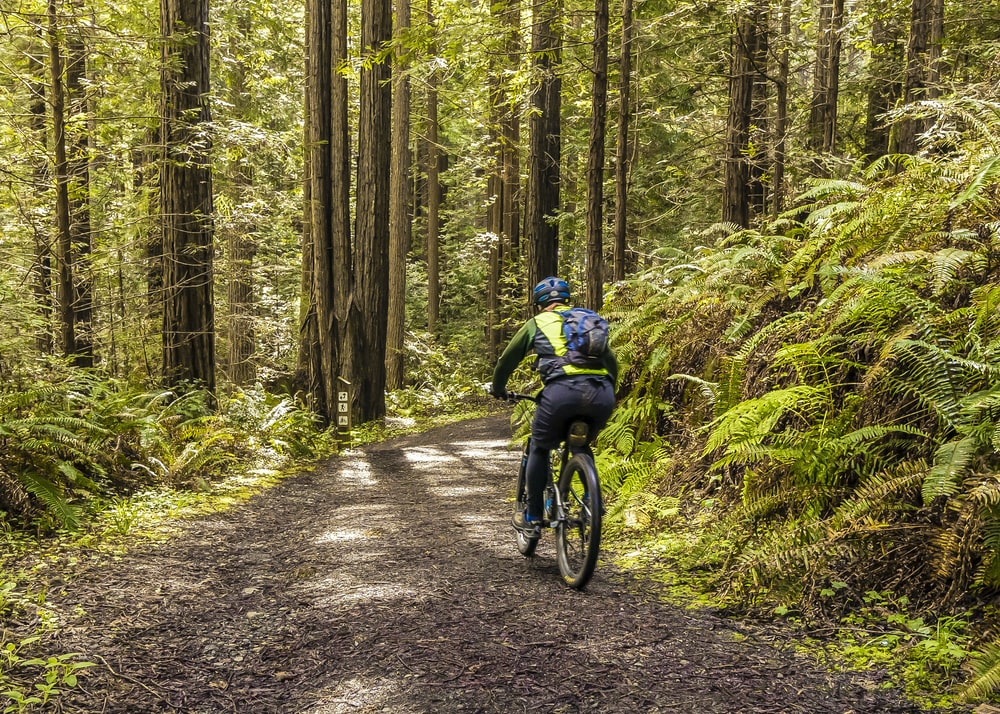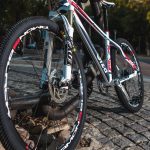When you’re new to the sport, buying your first cross country mountain bike can feel overwhelming. With so many options and components to consider, where do you start? This comprehensive guide will walk you through everything you need to know to find the right cross country mountain bike for your needs and budget.
We’ll cover how to determine the proper frame size, wheel size, and ideal suspension system. You’ll also learn about key components like drive trains, brakes, and more. With the right insight, you can invest in a quality cross country bike you’ll enjoy for years to come. So let’s get started!
Choosing the Proper Frame Size
Getting the right frame size is crucial for control, efficiency, and comfort on a cross country mountain bike. Generally, you want about two to four inches of clearance between the top tube and your body when standing over the bike. Consult each bike company’s individual size chart, as a medium with one brand could be a large in another.
Sit on the bike to test the reach and get a feel for the handling. The frame should provide a comfortable, natural riding position without being overly stretched or cramped. Remember, you can make minor fit adjustments with seat height and stem lengths, but you can’t change the core frame proportions. So take the time to dial in the frame size from the start.
Understanding Wheel Size Options
Cross country mountain bikes come equipped with 29-inch, 27.5-inch (650b), or even 26-inch wheel options. Larger wheels roll over obstacles easier and have more momentum to power up climbs. But smaller wheels offer nimbler handling, faster acceleration, and a lower standover height.
For most cross country riding, 29ers are ideal. The large wheels maintain traction through loose trails, allowing you to stay in control no matter the terrain. Just be mindful that larger frames are required in order to avoid pedal strikes with bigger wheels.
Novice riders, smaller females, and anyone who prioritizes agile handling may want to consider 27.5-inch options. While you lose a bit of rollover capability, the added maneuverability can boost confidence on technical trails.
Factoring in Front and Rear Suspension
Another major component on cross country bikes is the suspension system. Suspension soaks up impacts to improve control and reduce fatigue over long distances. Most cross country bikes utilize a hardtail design with front suspension and a rigid rear. But many now integrate full suspension with shocks front and rear.
For less technical terrain and smoother single track, a quality hardtail offers everything you need. The front suspension eases the ride while the stiff rear frame remains highly efficient for climbing. Entry-level and mid-range bikes gravitate toward hardtails to keep costs down.
Once you upgrade to intermediate cross country riding with roots, rocks, and drops, consider a full suspension bike. By absorbing impacts throughout the frame, you maintain better traction for faster, more confident downhill riding. Just know full suspension comes at a higher price and requires more maintenance than rigid alternatives.
Choosing Quality Drivetrain Components
The drivetrain essentially serves as the engine to propel your cross country bike. It consists of the crankset, chainrings, rear cassette, derailleurs, chain, and shifters. Together these parts harness your pedaling power to drive the wheels.
When evaluating drivetrains, you generally get what you pay for. Less expensive components are heavier and wear out faster from trail abuse. Higher-end parts shift more smoothly and hold up better through mud, grit, and exposure.
Look for 1x or 2x set-ups with quality derailleurs and wide-range cassettes in your budget. This offers simpler, more reliable shifting across gears to handle changing terrain. Finally, select durable cranksets, chainrings and chains that won’t bend or snap over time as drivetrain parts see significant stress while riding.
Picking Reliable Braking Systems
Given the speed you’ll pick up bombing down cross country trails, the ability to scrub that velocity is critical. Disc brakes continue to dominate mountain bikes, bringing superior power and modulation to rein things in. The two main options include cable operated mechanical discs and high-powered hydraulic versions.
Mechanical discs suffice for most recreational riding. The cables and housing are external for easy inspection and bleeding. Just watch pad alignment and cable tension to prevent rubbing and inconsistent lever pressure.
Serious riders will benefit from stepped-up hydraulic brakes, however. Sealed fluid lines and pressure-based operation greatly reduce lever effort. This allows better braking control when fatigued. The integrated design resists weather and contamination too. Go with quality branded calipers and brake levers to get the most from this investment.
Just ensure your brakes offer ample reach adjustment to properly fit your hands. This helps apply even pressure for confidence inspiring stopping power across long descents.
Accounting for Key Components
Besides the major systems outlined already, it’s worth highlighting additional components that influence how a cross country bike handles. The stem, handlebars, saddle, and pedals all contact your body, so dial these parts in for maximum comfort.
Look for bars with backsweep and rises to reduce strain on your hands and wrist. Consider a dropper seat post to lower the saddle for descents without impeding pedaling efficiency. Proper clipless pedals also grant power transfer when cranking up climbs. Don’t ignore seemingly minor parts as they greatly impact your cross country experience.
Finally, keep weight in mind, as lighter bikes accelerate and climb better to increase speed and responsiveness. But don’t sacrifice critical strength and durability just to drop a few pounds. Use carbon fiber, aluminum, and high-end alloys judiciously to pare heft. Going too extreme risks composure and longevity season after season.
Making the Most of Your Investment
Now that you’re armed with insider knowledge on cross country mountain bike anatomy, apply these tips when comparing models. Test rides go a long way to gauge comfort and handling before committing. If buying online, study geometry charts and component specs closely to make an informed choice.
While it’s tempting to lowball your budget, investing in a quality cross country hardtail or full suspension bike guarantees greater enjoyment, capability, and longevity on the trails. So stretch if reasonable to avoid upgrading in just a season or two.
Pair your new bike with proper protective gear like glasses, gloves, and a helmet to stay safe while advancing your off-road adventures. Feel confident tackling roots, switchbacks, and descents thanks to a dialed cross country rig underneath you. Just take time acclimating to the more aggressive position and responsive terrain compared to casual riding.
Before you know it, you’ll be crushing PRs on singletrack climbs thanks to your cross country steed. And bombing down once daunting rock gardens with a grin. So use this guide to zero in on the ideal bike as you take your riding to the next level.






